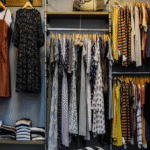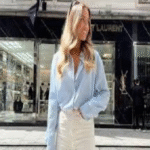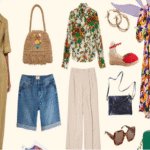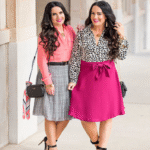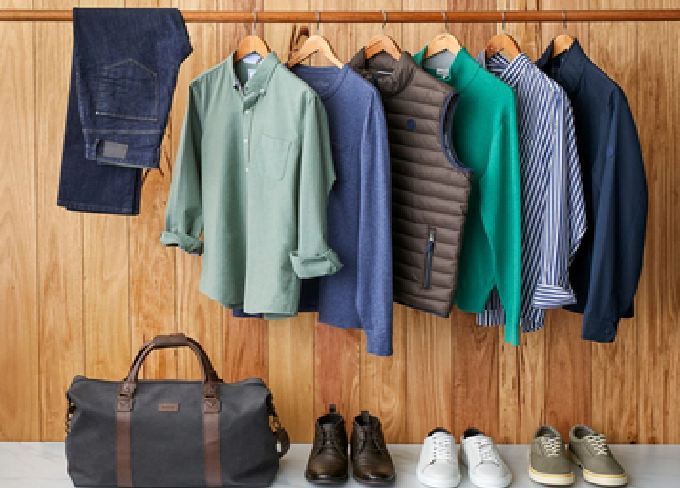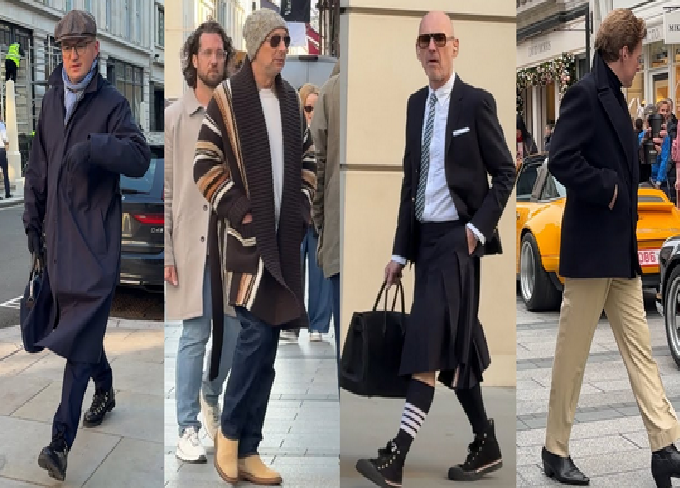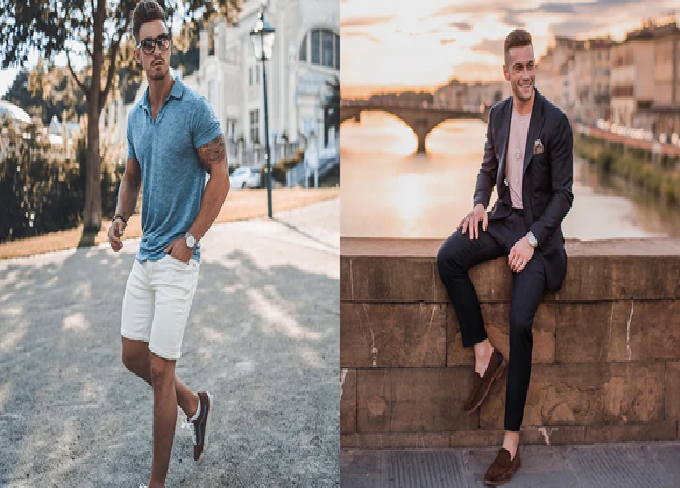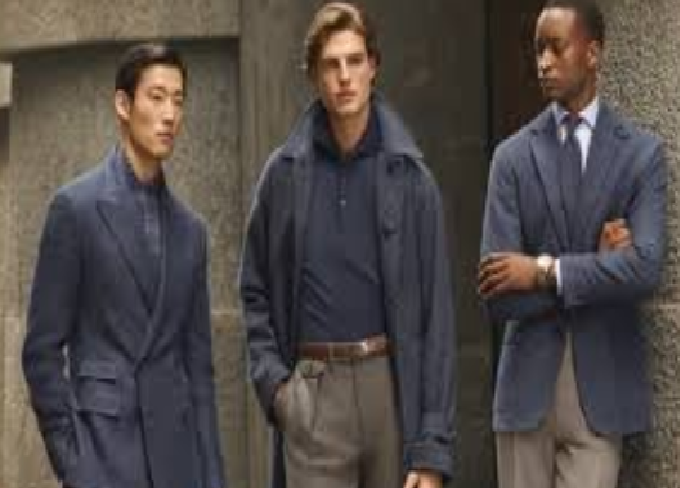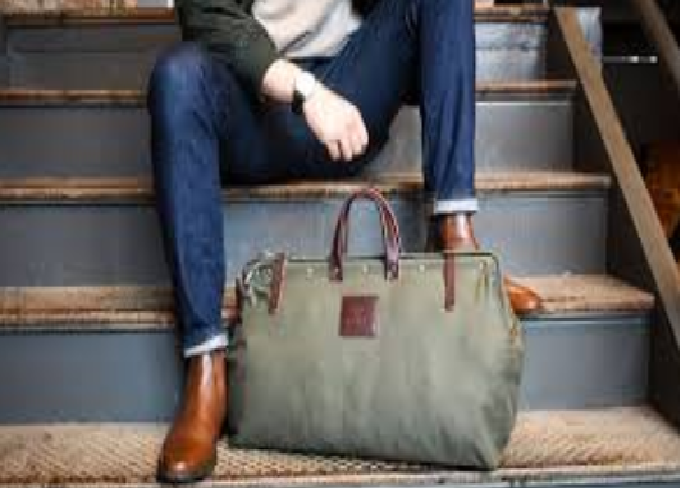Creating a stylish and versatile wardrobe is one of the best investments a man can make. It’s not about following every trend or owning hundreds of clothes—it’s about curating timeless, high-quality pieces that suit your lifestyle, personality, and body type. Whether you’re starting from scratch or refining what you already have, this complete guide will help you build a wardrobe that’s both fashionable and functional.
1. Understanding the Foundations of a Stylish Wardrobe
Before you start buying clothes, it’s important to understand what makes a wardrobe stylish. Style is not just about expensive brands—it’s about confidence, fit, and consistency. The key lies in owning pieces that work together harmoniously, can be mixed and matched, and make you feel great whenever you wear them.
A well-built wardrobe focuses on three main things:
-
Versatility – Clothes that can be worn for different occasions.
-
Quality over Quantity – Fewer but better-made pieces.
-
Timelessness – Styles that never go out of fashion.
Once you grasp these principles, you’ll have a clear direction for building your ideal collection.
2. Assessing Your Personal Style and Lifestyle
Your wardrobe should reflect you. Start by assessing your lifestyle, daily routines, and preferences. Ask yourself:
-
What’s my work dress code—formal, business casual, or relaxed?
-
How often do I attend social events or formal gatherings?
-
What type of climate do I live in?
-
What colors and fits make me feel confident?
For example, a corporate professional may prioritize tailored suits and dress shirts, while a creative freelancer might lean toward casual chinos, stylish sneakers, and statement jackets. Understanding your personal style helps you make smarter shopping choices and avoid unnecessary clutter.
3. Building the Foundation: Essential Wardrobe Staples
A stylish wardrobe starts with timeless basics that form the foundation of any look. These are the pieces that never go out of style and can be easily combined for multiple outfits.
a. Classic White Shirt
Every man needs a crisp white button-down. It’s versatile enough for formal occasions, date nights, or casual weekends. Pair it with a suit for business events or jeans for a laid-back look.
b. Well-Fitted Jeans
A good pair of jeans is the ultimate wardrobe essential. Choose dark blue or black slim-fit jeans for a sharp yet casual style. Avoid overly distressed or baggy styles—they date quickly and limit versatility.
c. Tailored Blazer
A well-fitted blazer instantly elevates your look. Opt for a navy or charcoal color—it pairs perfectly with jeans, chinos, or dress trousers.
d. Plain T-Shirts
Invest in a few high-quality cotton T-shirts in neutral tones like white, gray, black, and navy. These can be layered under jackets or worn alone for a minimal, modern vibe.
e. Chinos
Chinos are a smart-casual staple—perfect for office wear, casual outings, or dinner dates. Go for beige, olive, or navy as your base colors.
f. Dress Trousers
For formal events, nothing beats a pair of tailored trousers. Choose neutral shades like charcoal, gray, or navy for maximum pairing options.
g. Oxford or Derby Shoes
Quality dress shoes complete a polished look. Brown or black leather pairs beautifully with most outfits. Take good care of them—they can last for years.
h. Sneakers
A clean pair of white sneakers is a modern must-have. They bridge the gap between casual and smart-casual styles effortlessly.
i. Outerwear
Depending on your climate, invest in a few outerwear essentials—like a trench coat, bomber jacket, or leather jacket. Each brings a unique edge to your look.
4. Understanding Fit: The Key to Looking Stylish
Fit is arguably the most important aspect of style. Even the most expensive clothing will look bad if it doesn’t fit well. When buying clothes, focus on how they complement your body shape.
Here’s a quick checklist for good fit:
-
Shoulders: The seams should sit perfectly at your shoulder edge.
-
Sleeves: Shirt sleeves should end just above your wrist bone.
-
Pants: Should gently break at the top of your shoes.
-
Blazers/Jackets: Should hug your shoulders but not restrict movement.
If you’re between sizes, consider visiting a tailor. Small adjustments can transform an average outfit into a perfectly polished one.
5. Choosing the Right Colors for Your Wardrobe
Color coordination is crucial for building a cohesive wardrobe. Start with neutral tones as your foundation—they’re timeless, easy to mix, and look sophisticated.
-
Neutrals: White, black, gray, navy, and beige form your base.
-
Accent colors: Olive green, burgundy, and light blue add personality.
-
Bold tones: Reserve brighter shades (like red or mustard) for statement pieces.
A balanced color palette makes your wardrobe more versatile. For example, a navy blazer, white shirt, and beige chinos can be combined in multiple ways with different accessories.
6. Layering Like a Pro
Layering adds depth and character to your outfits. It’s also practical for seasonal transitions. The key is to combine textures and tones that complement each other.
Here’s how to layer smartly:
-
Base Layer: A simple T-shirt, polo, or shirt.
-
Middle Layer: Sweater, cardigan, or light jacket.
-
Outer Layer: Coat, trench, or blazer for structure.
Always keep the inner layers lighter in color and weight, while the outer layers can be darker or heavier for contrast.
7. Dressing for Different Occasions
A stylish wardrobe should serve you well for every situation—whether you’re going to work, attending a wedding, or heading out with friends.
a. Office Wear
-
Tailored trousers or chinos
-
Button-down shirts
-
Blazers or sports coats
-
Leather shoes
b. Casual Outings
-
Slim jeans or chinos
-
T-shirts or polo shirts
-
Sneakers or loafers
-
Lightweight jackets
c. Formal Events
-
Well-fitted suit in navy or charcoal
-
White dress shirt
-
Silk tie and pocket square
-
Polished leather shoes
d. Weekend Comfort
-
Joggers or denim
-
Casual T-shirts
-
Hoodies or sweatshirts
-
Comfortable sneakers
Having clothing ready for each occasion eliminates last-minute stress and keeps your look consistent.
8. The Power of Accessories
Accessories are small details that make a big difference. They show attention to detail and can elevate even the simplest outfit.
a. Watches
A classic wristwatch is a must-have. A stainless-steel watch adds sophistication, while leather-strapped ones are timelessly elegant.
b. Belts
Match your belt with your shoes—black with black, brown with brown. A good leather belt gives structure and polish to your outfit.
c. Sunglasses
Choose frames that complement your face shape. Aviators and wayfarers are universally flattering styles.
d. Ties and Pocket Squares
These add personality to formalwear. Experiment with colors and textures, but keep the overall tone balanced.
e. Bags
Ditch the old backpack—opt for a sleek leather briefcase or messenger bag for a more refined look.
f. Jewelry
Minimalist pieces like a bracelet, ring, or chain can add subtle flair, but avoid overdoing it.
9. Seasonal Wardrobe Essentials
Different seasons call for different fabrics and layers. Here’s how to adapt your wardrobe year-round:
Spring
Light jackets, cotton shirts, and breathable chinos work well. Stick to pastel and lighter tones.
Summer
Focus on breathable fabrics—linen shirts, shorts, and loafers. Lighter colors help keep you cool.
Autumn
Introduce heavier textures—corduroy, wool sweaters, and leather jackets. Earthy tones like brown, olive, and burgundy dominate.
Winter
Invest in quality coats, scarves, gloves, and boots. Layer with sweaters and turtlenecks for warmth and sophistication.
10. Grooming and Personal Presentation
A stylish wardrobe is incomplete without proper grooming. Good hygiene, skincare, and hairstyle elevate your entire appearance.
-
Hair: Keep it clean and well-trimmed.
-
Beard: Maintain neat lines or stay clean-shaven.
-
Skincare: Use moisturizer and sunscreen regularly.
-
Fragrance: A subtle cologne leaves a lasting impression.
Confidence comes not just from what you wear but also from how well you carry yourself.
11. How to Shop Smart and Build Over Time
Building a wardrobe doesn’t happen overnight. It’s a gradual process of refinement.
Tips for shopping smart:
-
Prioritize quality over quantity.
-
Buy pieces that fit multiple outfits.
-
Invest in tailoring for a perfect fit.
-
Wait for seasonal sales for premium items.
-
Avoid impulse buying—always ask, “Can I wear this in at least three ways?”
Building your wardrobe gradually ensures you only keep what truly works for you.
12. Wardrobe Maintenance and Care
To make your clothes last longer and always look fresh, proper care is essential.
-
Wash with care: Follow fabric labels—avoid overwashing.
-
Iron or steam: Wrinkle-free clothes look polished.
-
Store properly: Hang shirts and suits; fold knits.
-
Polish shoes: Regular maintenance keeps them sharp.
-
Rotate outfits: It reduces wear and tear.
Treat your wardrobe as an investment—because it is.
13. Building Confidence Through Style
True style goes beyond clothes—it’s about self-expression and confidence. When you wear outfits that reflect your personality and fit well, you naturally feel more assured.
Remember, style is a journey, not a destination. The more you experiment, the better you understand what works for you.
14. Avoiding Common Style Mistakes
Even the best-dressed men make mistakes. Here’s how to avoid them:
-
Wearing clothes that don’t fit properly.
-
Over-accessorizing or mismatching colors.
-
Ignoring grooming and hygiene.
-
Neglecting shoe care.
-
Following every trend blindly.
Keep your wardrobe simple, elegant, and functional—it’s the safest route to lasting style.
15. Curating Your Signature Look
Your ultimate goal should be to develop a signature style—a look that people recognize as uniquely yours. It could be the way you wear your blazers, your choice of footwear, or your preference for monochrome outfits.
Experiment until you find what feels right. Once you do, it’ll become second nature to dress well every day.
Conclusion
Building a stylish men’s wardrobe isn’t about spending thousands—it’s about understanding yourself, investing in quality, and mastering the art of combination. Start with timeless basics, focus on fit and color coordination, and slowly layer in unique pieces that reflect your personality.
A man who dresses well commands respect, feels confident, and leaves a lasting impression—no matter the occasion. So take the time to refine your wardrobe, maintain it with care, and let your style speak for you every day.

